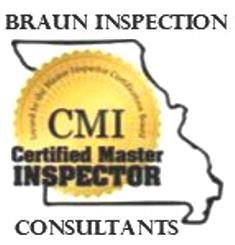The Missouri Department of Natural Resources (DNR) regulates public water systems. The Missouri Department of Health and Senior Services regulates the inspection process of residential wells. Approximately 15% of Americans rely on their own private well for drinking purposes. Unlike public drinking water systems serving many people, experts regularly are not checking the water’s source and its quality before it is sent to the tap. These households must take special precautions to ensure the protection and maintenance of their drinking water.
Basic Information
There are three types of private drinking water wells: dug, driven, and drilled. Proper well construction and continued maintenance are keys to the safety of your water supply. All well drillers in Missouri are regulated under DNR. The well should be constructed so water does not pool around which can seep into the well, potentially causing health problems. The contractor should be bonded and insured. Make certain your well contractor is licensed by DNR.
To keep your well safe, you must be sure that possible sources of contamination are not close by. Protect your own well area. Be careful about storage and disposal of household and lawn-care chemicals and wastes. Take steps to reduce erosion and prevent surface water runoff. Regularly check underground storage tanks that hold home heating oil, diesel, or gasoline. Make sure your well is protected from the wastes of livestock and pets.
Dug Wells
Dug wells are holes in the ground dug by shovel or backhoe. Historically, a dug well was excavated below the ground water table until incoming water exceeded the digger’s bailing rate. The well was then lined (cased) with stones, brick, tile, or other material to prevent collapse. It was covered with a cap of wood, stone or concrete. Since it is so difficult to dig beneath the ground water table, dug wells are not very deep. Typically, they are only 10 to 30 feet deep. Being so shallow, dug wells are commonly contaminated. Dug wells usually test with a high level of Coliform Bacteria.
Driven Wells
Like dug wells, driven wells pull water from the water-saturated zone above the bedrock. Driven wells can be deeper than dug wells. They are typically 30 to 50 feet deep and are usually located in areas with thick sand and gravel deposits where the ground water table is within 15 feet of the ground’s surface. Although deeper than dug wells, driven wells are still relatively shallow and have a moderate-to-high risk of contamination.
Driven Well Construction Features
Assembled lengths of 2- to 3-inch diameter metal pipes are driven into the ground. A screened “well point” located at the end of the pipe helps drive the pipe through the sand and gravel. The screen allows water to enter the well and filters out sediment. The pump for the well is either on top of the well, or in the house.
Drilled Wells
Drilled wells are the most common type of well.
They provide the best protection against water containments. Drilled wells penetrate about 100 to 400 feet into the bedrock. To serve as a water supply, a drilled well must intersect bedrock fractures containing ground water.
Drilled Well Construction Features
The casing is usually metal or plastic pipe, 6 inches in diameter, that extends into the bedrock to prevent shallow ground water from entering the well. By law, the casing has to extend at least 18 feet into the ground, with at least 5 feet extending into the bedrock. The casing needs to extend at least 12 inches above the top of ground. The well should be capped to prevent surface water from entering the well.
Submersible pumps, located near the bottom of the well, are most commonly used in drilled wells. Wells with a shallow water table may feature a jet pump located inside the home.
Most modern drilled wells incorporate a pitless adapter designed to provide a sanitary seal at the point where the discharge water line leaves the well to enter your home. The device attaches directly to the casing below the frost line, and provides a watertight sub-surface connection, protecting the well from frost and contamination.
Water Quality
Consider testing your well for pesticides, organic chemicals, and heavy metals before you use it for the first time. Test private water supplies for nitrate, lead, e.coli and coliform bacteria to detect contamination problems early.
The first step to protect you and your health of your family is learning about what may pollute your source of drinking water. Potential contamination may occur naturally, or as a result of human activity. These contaminates are:
- Micro-organisms - Bacteria, viruses, parasites and other microorganisms are sometimes found in water. Shallow wells are at most risk. Runoff, or water flowing over the land surface, may pick up these pollutants. This is often the case after flooding. Some of these organisms can cause a variety of illnesses. Symptoms include nausea and diarrhea. These can occur shortly after drinking contaminated water. The effects could be short-term yet severe (similar to food poisoning), or might recur frequently or develop slowly over a long time.
- Radon - Radon is a gas that is a natural product of the breakdown of uranium in the soil and can also pose a threat. Radon is most dangerous when inhaled, and contributes to lung cancer. Radon is less dangerous when consumed in water, but remains a risk to health.
- Nitrates and nitrites - High nitrate levels are usually due to human activities; they may be found naturally in ground water.
Nitrates and nitrites come from the breakdown of nitrogen compounds in the soil. Flowing ground water pick up these compounds from the soil.
Drinking large amounts of nitrates and nitrites is particularly threatening to infants (for example, when mixed in formula). - Heavy metals - Underground rocks and soils may contain arsenic, cadmium, chromium, lead, and selenium. However, these contaminants are not often found in household wells at dangerous levels from natural sources.
- E.Coli - Septic tanks are designed to have a drainfield, which is an area where wastewater flows out of the tank. This wastewater can also move into the ground water. Also, a large numbers of farm animals or pets concentrated near the well can cause E. Coli to seep into well water. Both wastewater treatment systems and animal manure must be carefully managed to prevent pollution. A well should not be located downhill from any area containing human or animal waste.
- Fertilizers, Pesticides and other Chemicals - Farmers and gardeners use fertilizers and pesticides to promote growth and reduce insect damage. The chemicals may end up in ground water. Such pollution depends on the types and amounts of chemicals used and how they are applied. Local environmental conditions (soil types, seasonal snow and rainfall) also affect this pollution. Many fertilizers contain forms of nitrogen that can break down into harmful nitrates. This could add to other sources of nitrates mentioned above. Pesticides used to treat buildings and homes for termites and other pests may also pose a threat. The possibility of problems depends on the amount and kind of chemicals, the types of soil and the amount of water moving through the soil.
- Industrial Products and Waste - Many harmful chemicals are used widely in local business and industry. These can pollute drinking water if not well-managed.
- Household Waste - Improper disposal of many common products can contaminate the ground water, such as cleaning solvents, used motor oil, paints, and paint thinners. Even soaps and detergents can harm drinking water. Often from faulty septic tanks and drainfields.
- Lead and Copper - Household plumbing materials are the most common source of lead and copper found in home drinking water. Corrosive water may cause metals in pipes or soldered joints to leach into your drinking water. Your water’s acidity or alkalinity (often measured as pH) greatly affects corrosion. Temperature and mineral content can affect how corrosive the water is. They are often used in pipes, solder and plumbing fixtures. Lead can cause serious damage to the brain, kidneys, nervous system, and red blood cells. The age of plumbing materials is a major factor in lead and cooper contimination. Even in relatively low amounts, these metals can be harmful. The EPA rules under the Safe Drinking Water Act limit lead in drinking water to 15 parts per billion. Since 1988, the Act allows only lead-free pipe, solder and flux in drinking water systems. This law covers both new installations and repairs of plumbing.

